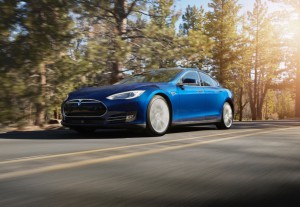
EVs tend to draw more affluent buyers who are looking for a deal to offset the high price of the vehicles.
While sales of battery-based vehicles have lagged well behind industry expectations, manufacturers have been pleasantly surprised to discover that buyers are both younger and more affluent than those buying comparable gas-powered models.
But for most of those folks, going green wasn’t necessarily the only reason to buy a car like the Ford Focus Electric or Toyota Prius Plug-in. They were also attracted by the great deals manufacturers like Ford, General Motors, Toyota and Honda have been offering in an effort to build momentum for their electrified models, according to research by auto data firm TrueCar.com.
“EV buyers are affluent deal-seekers benefitting from big OEM discounts and (as much as) $10,000 of federal and state tax subsidies,” noted TrueCar President John Krafcik.
The Ford Focus offers a bit of insight. The conventional model’s typical buyer is 46 years of age and has a household income of $77,000 annually. But the Focus Electric is typically purchased by a 43-year-old coming from a home with combined earnings of $199,000.
That pattern repeats itself across the industry, according to TrueCar. The person buying a Fiat 500e averages 45 years of age and has a household income of $145,000. That’s twice the money of a conventional Fiat 500 buyers, and two years younger, on average.
For the U.S. auto industry on the whole, the typical buyer is 52 years old with an $86,000 household income, according to Krafcik.
Smart shopping is “one way affluent people become affluent,” suggested Krafcik.
(Chevy cuts price, increases range on 2016 Volt. For more, Click Here.)
Based on their MSRP, battery-based vehicles typically cost more than comparable gas models. But that gap is closing as manufacturers both drive down the cost of the green technology – and often swallow much of the premium in order to boost demand.
Chevrolet is taking a $1,175 discount with the launch of an all-new version of its Volt – on top of earlier price cuts with the old version of the extended-range electric vehicle. The 2016 Chevrolet Volt will cost as little as $26,495 when federal credits are taken into account, and some states offer additional financial incentives.
(Click Here for details about GM slashing the price of the Spark EV.)
Those figures don’t include the often substantial incentives manufacturers have been adding to boost demand at a time when low gas prices have cut interest in alternative-power vehicles.
And it doesn’t factor in the savings on fuel many customers are reporting. Chevy says the typical buyer of a first-generation Volt has averaged about 900 miles per tankful of gas because they spend so much of their time riding in electric mode. The maker expects that to increase to 1,500 miles per tank with the 2016 Volt, which gets an estimated 50 miles per charge, roughly a third more than the old model.
(To see more about Tesla’s entry-level Model S, Click Here.)
Not all battery-car buyers are looking for a bargain, however. Tesla has offered no incentives on its Model S sedan, which can push upwards of $100,000 for the high-performance all-wheel-drive version. It recently dropped its old base edition, increasing the price of the new Model S 70D but adding AWD and boosting its range.
